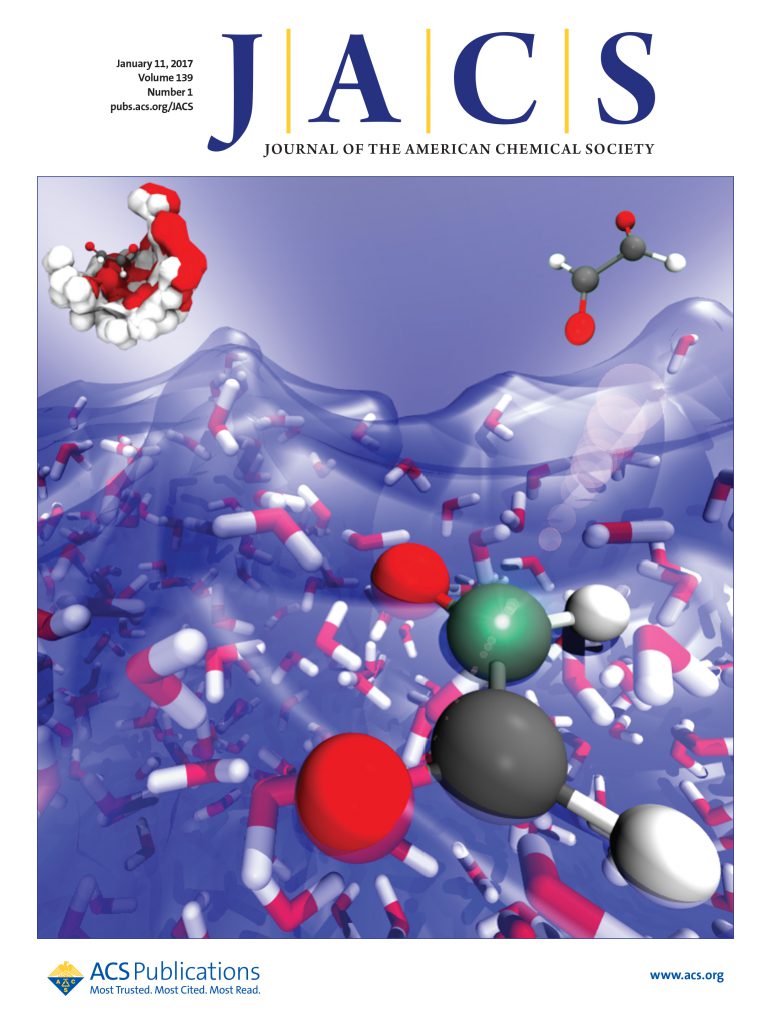Silica-Driven CO2 Reduction in Water Microdroplets.
IF 14.4
1区 化学
Q1 CHEMISTRY, MULTIDISCIPLINARY
引用次数: 0
Abstract
Carbon dioxide (CO2), the most notorious greenhouse gas responsible for global warming and ocean acidification, could persist in the atmosphere for 50 to 200 years, posing substantial long-term environmental challenges. However, its environmental fate remains not fully clear. This study reveals a previously unrecognized silica-driven CO2 reduction pathway in ubiquitous water microdroplets, enabling the efficient conversion of CO2 primarily into formic acid, along with other C1 and C2 products such as methanol, acetic acid, and ethanol, under ambient conditions. Notably, the reaction proceeds at a rate of 3.24 mmol g-1 h-1, exceeding those reported for microdroplet systems utilizing amine absorbents or metal catalysts. Bonn-Oppenheimer molecular dynamics simulations further reveal that at the gas-water interface, a hydrated electron (H2O·-) reduces CO2 to a CO2·- radical anion, which subsequently abstracts a hydrogen atom from Si-OH sites on SiO2 nanoparticles, yielding HCOO- as the primary product. Simultaneously, SiO2 nanoparticles undergo partial disintegration, exposing fresh surfaces and generating additional Si-OH sites, thereby continuously promoting CO2 conversion. These findings provide critical insights into climate evolution mechanisms, the chemical processes underlying acid rain and aerosol formation, and the advancement of efficient CO2 utilization strategies.二氧化硅驱动的水微滴二氧化碳还原。
二氧化碳(CO2)是造成全球变暖和海洋酸化的最臭名昭著的温室气体,它可能在大气中持续存在50至200年,对环境构成重大的长期挑战。然而,它的环境命运仍不完全清楚。这项研究揭示了一个以前未被认识到的二氧化硅驱动的二氧化碳还原途径,在无处不在的水微滴中,使二氧化碳主要转化为甲酸,以及其他C1和C2产品,如甲醇、乙酸和乙醇,在环境条件下。值得注意的是,该反应以3.24 mmol g-1 h-1的速率进行,超过了使用胺吸收剂或金属催化剂的微滴系统。波恩-奥本海默分子动力学模拟进一步表明,在气-水界面,水合电子(H2O·-)将CO2还原为CO2·-自由基阴离子,随后从SiO2纳米颗粒上的Si-OH位点上提取氢原子,生成HCOO-作为主要产物。同时,SiO2纳米颗粒发生部分分解,暴露出新的表面并产生额外的Si-OH位点,从而不断促进CO2转化。这些发现为气候演化机制、酸雨和气溶胶形成的化学过程以及有效利用二氧化碳的策略提供了重要的见解。
本文章由计算机程序翻译,如有差异,请以英文原文为准。
求助全文
约1分钟内获得全文
求助全文
来源期刊
CiteScore
24.40
自引率
6.00%
发文量
2398
审稿时长
1.6 months
期刊介绍:
The flagship journal of the American Chemical Society, known as the Journal of the American Chemical Society (JACS), has been a prestigious publication since its establishment in 1879. It holds a preeminent position in the field of chemistry and related interdisciplinary sciences. JACS is committed to disseminating cutting-edge research papers, covering a wide range of topics, and encompasses approximately 19,000 pages of Articles, Communications, and Perspectives annually. With a weekly publication frequency, JACS plays a vital role in advancing the field of chemistry by providing essential research.

 求助内容:
求助内容: 应助结果提醒方式:
应助结果提醒方式:


